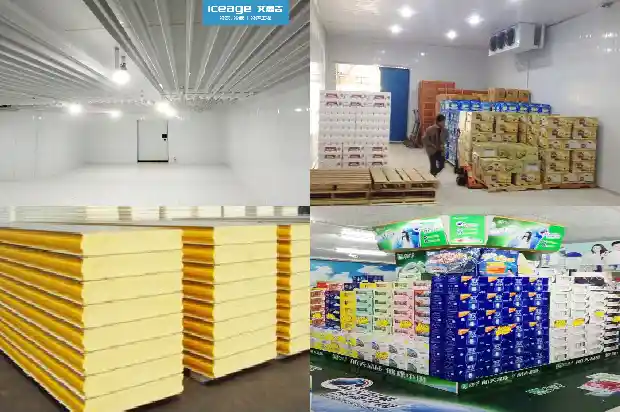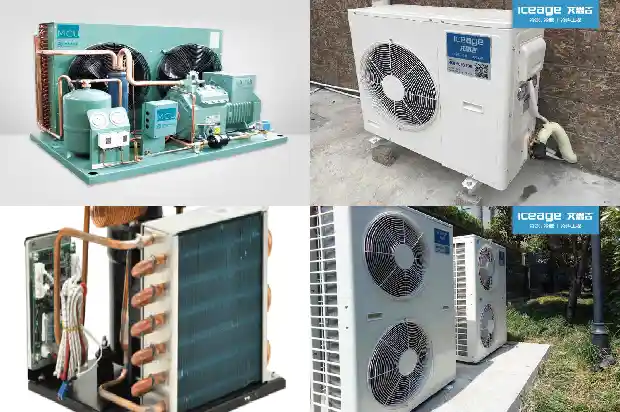Reasons for Compressor Oil Deterioration and Oil - adding Operations
2025-02-26
I. Main Reasons for the Deterioration of Compressor Oil
- Oil - water Mixture
Water gets mixed into the refrigeration oil. If water enters the refrigeration system due to improper operation and mixes with the refrigeration oil, it will reduce the viscosity of the refrigeration oil and decrease its lubrication performance. - High - temperature Oxidation
The refrigeration oil oxidizes at high temperatures. When the exhaust temperature of the compressor is relatively high, it not only reduces the viscosity of the oil, affecting its lubrication performance, but may also cause the oil to oxidize and deteriorate. Especially for refrigeration oils with poor thermal stability, free carbon is decomposed around the exhaust valve plate in a high - temperature environment, resulting in the valve plate not closing tightly and reducing the volumetric efficiency of the compressor. - Mixing of Impurities
Cast sand that has fallen off and metal wear debris reduce the quality of the refrigeration oil. In addition, poor - quality sealing gaskets and rubber seals will also accelerate the aging and deterioration of the oil. - Incompatible Oil Grades
Due to poor operational skills and other reasons, different grades of refrigeration oils are used in combination. If two refrigeration oils containing antioxidant additives of different properties are mixed together, a chemical change may occur, forming precipitates, seriously affecting the lubrication performance of the compressor and even preventing the formation of an oil film.
Regarding the identification of the quality of refrigeration oil, the methods are as follows:
To identify whether the refrigeration oil has deteriorated, it should be identified through testing. In practical operations, it can also be simply determined from the color and smell of the oil whether the refrigeration oil can continue to be used.
When the refrigeration oil deteriorates, its color often darkens. Drop the oil on white paper. If there is no black in the central part of the oil drop, it indicates that the refrigeration oil has not deteriorated; if there is a black spot in the center of the oil drop, it means the refrigeration oil has started to deteriorate. When there is water in the oil, the transparency of the oil decreases, showing a dark green color. When there is more water and impurities mixed in the refrigeration oil, this identification experience is very effective. However, it is not necessary to precisely identify the quality of the oil. Considering operational economy, as long as the color of the oil significantly darkens or the compressor reaches the specified oil - change time, the oil - change operation should be carried out immediately.
To identify whether the refrigeration oil has deteriorated, it should be identified through testing. In practical operations, it can also be simply determined from the color and smell of the oil whether the refrigeration oil can continue to be used.
When the refrigeration oil deteriorates, its color often darkens. Drop the oil on white paper. If there is no black in the central part of the oil drop, it indicates that the refrigeration oil has not deteriorated; if there is a black spot in the center of the oil drop, it means the refrigeration oil has started to deteriorate. When there is water in the oil, the transparency of the oil decreases, showing a dark green color. When there is more water and impurities mixed in the refrigeration oil, this identification experience is very effective. However, it is not necessary to precisely identify the quality of the oil. Considering operational economy, as long as the color of the oil significantly darkens or the compressor reaches the specified oil - change time, the oil - change operation should be carried out immediately.

II. Operations of Oil Drainage and Oil Addition
If the compressor needs to be disassembled for repair or the quality of the refrigeration oil deteriorates and needs to be replaced, the operation steps for oil drainage and oil addition are as follows:
Turn the suction and discharge valve stems of the compressor to the top - closed position to isolate the compressor from the system. Since the compressor has a fault or the refrigeration oil is of poor quality and the compressor can no longer operate normally, the refrigerant in the crankcase cannot be discharged into the high - pressure area by the compressor.
Unscrew the oil drain plug at the bottom of the crankcase. What is discharged first is the refrigeration oil and refrigerant gas. If the inside of the crankcase is too dirty, the crankcase of the compressor can be cleaned.
Since the refrigeration oil in the crankcase has been completely drained and starting the compressor is not allowed, the compressor cannot be used to suck in new refrigeration oil. It is necessary to connect an external vacuum pump to evacuate the crankcase, and then use the vacuum pressure in the crankcase to suck in the refrigeration oil.
Connect a refrigerant - charging tube to any one of the three valves: the by - pass hole of the suction valve, the by - pass hole of the oil three - way valve, or the special oil - charging valve. The refrigerant - charging tube is connected to a service gauge valve, and the service gauge valve is connected to a vacuum pump through another refrigerant - charging tube.
Open the service valve and start the vacuum pump for a few minutes. When a vacuum is present in the crankcase, close the service gauge valve and remove the vacuum pump. Immerse the refrigerant - charging tube in the refrigeration oil, open the service gauge valve, and the refrigeration oil will be sucked into the crankcase.
Stop adding oil when the oil level reaches the oil level line. Connect the refrigerant - charging tube used for oil suction to the vacuum pump again, evacuate, then close the service valve and stop the vacuum pump.
Turn the suction and discharge valve stems of the compressor to the top - closed position to isolate the compressor from the system. Since the compressor has a fault or the refrigeration oil is of poor quality and the compressor can no longer operate normally, the refrigerant in the crankcase cannot be discharged into the high - pressure area by the compressor.
Unscrew the oil drain plug at the bottom of the crankcase. What is discharged first is the refrigeration oil and refrigerant gas. If the inside of the crankcase is too dirty, the crankcase of the compressor can be cleaned.

Since the refrigeration oil in the crankcase has been completely drained and starting the compressor is not allowed, the compressor cannot be used to suck in new refrigeration oil. It is necessary to connect an external vacuum pump to evacuate the crankcase, and then use the vacuum pressure in the crankcase to suck in the refrigeration oil.
Connect a refrigerant - charging tube to any one of the three valves: the by - pass hole of the suction valve, the by - pass hole of the oil three - way valve, or the special oil - charging valve. The refrigerant - charging tube is connected to a service gauge valve, and the service gauge valve is connected to a vacuum pump through another refrigerant - charging tube.
Open the service valve and start the vacuum pump for a few minutes. When a vacuum is present in the crankcase, close the service gauge valve and remove the vacuum pump. Immerse the refrigerant - charging tube in the refrigeration oil, open the service gauge valve, and the refrigeration oil will be sucked into the crankcase.

Stop adding oil when the oil level reaches the oil level line. Connect the refrigerant - charging tube used for oil suction to the vacuum pump again, evacuate, then close the service valve and stop the vacuum pump.
Related Articles
- What Are the Common Reasons for Difficulties in Cooling a Cold Storage?
- Analysis of Seven Reasons for Ice Formation in Computer Room Air Conditioners
- Reasons for Frost Formation in Cold Storage and Defrosting Methods
- What Are the Reasons for Insufficient Air Output of Screw Air Compressors?
- Reasons for Pump Body Failures in Cold Storage Compressors
- What are the reasons for the inactivity of the automotive air conditioning compressor? What are the common faults?
- What are the reasons for the frequent start-up and tripping of the refrigerated air dryer in the cold storage?
- Reasons and Solutions for High and Low Condensing Pressure in Air-cooled and Water-cooled Systems
- 15 Reasons for Excessive Temperature Rise of Motors
- Reasons for Installing Thermal Insulation Layers in Cold Storages
- What are the reasons for the poor oil return of screw compressors?
- 7 Reasons for Low Air Pressure in Cold Water Unit
- Reasons for Higher Cost of Controlled Atmosphere Cold Storage than Ordinary Cold Storage
- Five potential reasons for the deteriorating performance of car air conditioning
- Nine common reasons for compressor damage
- Screw Compressor Units: Principles, Design and Selection - Essential Guide for Refrigeration Beginners
- Analysis of Causes for Compressor Liquid Hammer, Overheating and Pre - heating
- Oil Cooling Methods and Oil - changing Operation Procedures for Screw Compressors
